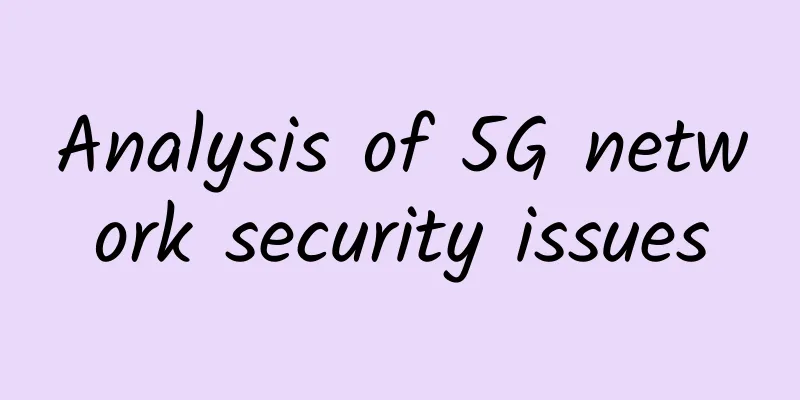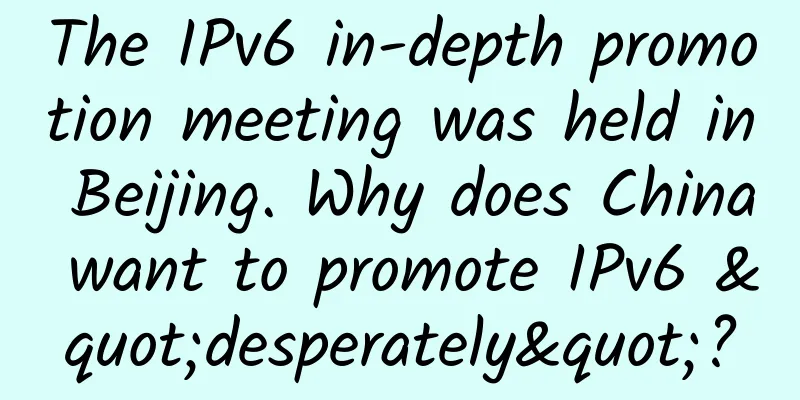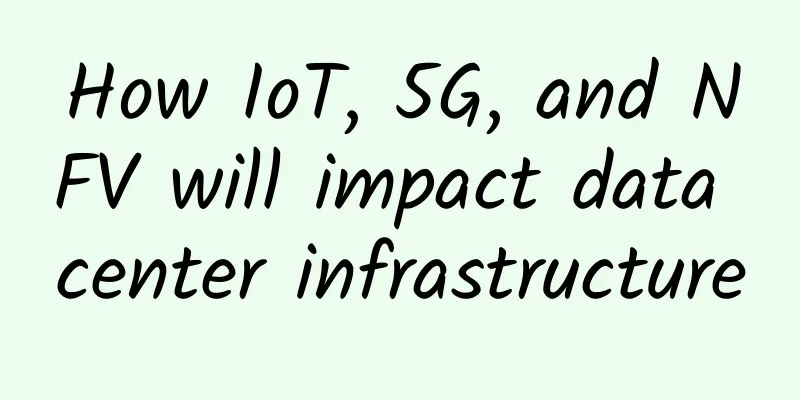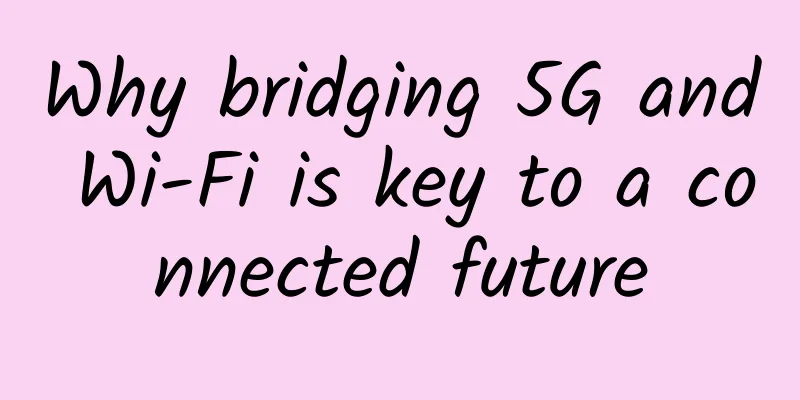Analysis of 5G network security issues

|
The fifth generation of mobile communication technology (5G) can provide users with extremely high peak rate experience, provide real-time and reliable network connection for high-density user connections, and ensure continuous and reliable connection of the Internet of Things. It has demonstrated its ability to fully promote the development of the digital economy and has become a must-win technology for countries to ensure information security. 5G networks, through the use of software-defined networks, network function virtualization and other technologies, embody the characteristics of programmability, high dynamic expansion and extreme flexibility. While 5G networks bring beautiful expectations to everyone, we also need to consider its potential security issues. This article analyzes the potential security risks that may arise in the use of 5G and discusses potential research and exploration directions in the future.
5G-related security issues 1. Access control security. 5G supports massive network facilities, multiple security levels, multiple categories of identity identification, large-scale user identity management and massive application scenarios, and has the characteristics of heterogeneous integration. Ordinary 4G homogeneous network access control uses unified hardware to achieve network access. The support for various heterogeneous access technologies and heterogeneous devices in 5G makes 5G access control face huge challenges. Specific issues include: it will become a common phenomenon for different network systems to use different access technologies. At this time, it is necessary to unify the authentication framework and establish a unified key system; the high-frequency access and exit of a large number of devices means that the device access is sudden, which poses a challenge to the efficiency of the access authentication mechanism; in the 5G environment, there are device role switching scenarios. For example, a smartphone may switch to a small base station. The security management of dual-identity devices is a new problem and is also worth studying. 2. Structural security. 5G networks use network function virtualization and software-defined network technologies to virtualize the physical resources in the network into multiple independent network slices. Whether operators or users, they can generate network slice templates according to the required security level, which contain the required module interfaces and required network resources. That is, network slicing can divide the physical network into multiple virtual networks, and the divided virtual networks can provide different application scenarios for different needs. Customized network slices can not only reduce resource consumption and save costs, but also improve the quality of service. However, this method changes the network topology in the conventional concept to a certain extent, resulting in the failure of security policies designed for traditional network devices. This relative openness and user-defined mode brings huge challenges to security and trustworthiness. How to ensure the controllability and confirmability of data and operations will be security issues that need to be considered. By studying the endogenous key technologies of 5G networks, it is necessary to explore the construction of a trusted and secure network. 3. User privacy and security. The construction of 5G networks involves IT infrastructure suppliers, communication network operators and virtual network operators. Access devices also use various possible network accesses to achieve ubiquitous connections between things and between things and people. That is, the links involved are more complex, the sources and flows of data are more diverse, and the user's privacy data will flow more widely. The introduction of virtualization technology in 5G technology will lead to a more blurred network security boundary. In a high-speed network environment, it poses a threat to user privacy. At the same time, how to provide differentiated privacy protection capabilities and achieve flexible selection of the scope and intensity of privacy information protection is also worthy of attention. Further research directions 1. Smarter authentication protocols and access control mechanisms. In the 5G environment, the number of access devices is large and the types are different. In addition, the physical and virtual states exist at the same time, which leads to a complex network environment. In this environment, it is a challenge to achieve complete and effective protection of information units. By authenticating devices in batches through group authentication protocols, it is possible to achieve the goals of reducing system calculations and communication volume, optimizing storage space, etc. By providing standard application programming interfaces and cross-platform authentication methods, more efficient key management and authentication mechanisms are proposed for heterogeneous networks, which are conducive to achieving more secure access control in 5G networks. 2. Integration with new technologies such as blockchain. As a new technology that has received continuous attention, the impact of blockchain technology on the security of the financial industry deserves attention. Many banks have now used blockchain technology to build a flat payment system. At this time, there is no central node in the construction of mutual trust between banks. The application of blockchain technology in the securities industry is mainly concentrated in the private equity field, which solves the problem of data modification or errors that may occur during manual processing. That is, blockchain has increasingly obvious advantages in achieving transparent and secure financial transactions, improving market efficiency and reducing financial operating costs. For applications in the Internet of Things environment, blockchain technology may have broad application prospects. The Ministry of Industry and Information Technology has worked with Alibaba Group and other units to create a blockchain framework specifically for the Internet of Things, and has also held discussions with the International Telecommunication Union. How 5G is combined with new technologies will also generate more research hotspots. |
>>: Σco Time | How to use "light" to promote the digital transformation of factories
Recommend
Make network management more efficient! Quickly scan the LAN and obtain IP and MAC addresses in real time
Have you ever received a network failure alert la...
The Ministry of Industry and Information Technology issued an urgent warning: fraud using "number portability" has been launched
On December 6, the Ministry of Industry and Infor...
Five-minute technical talk | A brief discussion on WebSocket protocol-RFC 6455
01 Introduction WebSocket is a network communicat...
Daily Bug Troubleshooting-All Connections Suddenly Closed
Preface The daily bug troubleshooting series is a...
Why does TCP require three handshakes instead of two?
Hello everyone, I am the island owner Xiaofeng. T...
HostKvm: Russia CN2 bandwidth upgrade, Russia/Hong Kong high-defense limited 50% discount is in progress
HostKvm is a foreign VPS service provider founded...
China Unicom dismantles its 2G network. What will happen to existing feature phone users?
According to official information from China Unic...
5G is not about mobile phones, but about the Internet of Things.
[[321085]] Recently, new infrastructure has conti...
Tencent Cloud mid-year discount preview, pre-heating exclusive 618 yuan early bird coupons with one click
Tencent Cloud's annual mid-year discount 618 ...
my country's 5G commercialization has delivered a global focus in its first year of annual inspection
According to the China News Service of China Nati...
Can't tell the difference between Wi-Fi and WLAN? Stop confusing them
Usually, we connect to WiFi when we surf the Inte...
2020, a new starting point for 5G messaging
Currently, nearly 100 operators around the world ...
McKinsey: These ten trends are enough to subvert the existing IT infrastructure
When it comes to hardware and IT infrastructure, ...
Three pictures tell you the principles of Linux TCP/IP protocol stack
It is no exaggeration to say that today's Int...
Aoyou Hosting Hong Kong CN2 High Defense VPS Simple Test
In December last year, the tribe shared informati...









